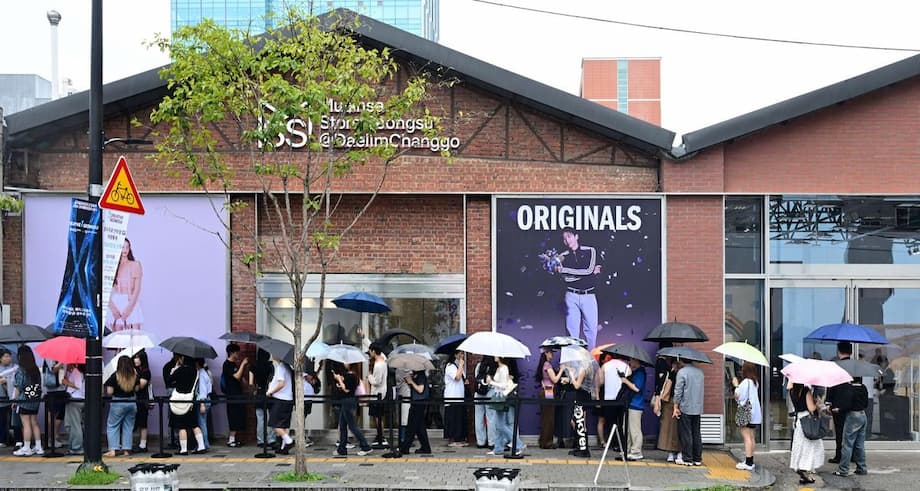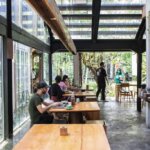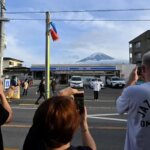Seongsu-dong’s Remarkable Transformation: From Factories to Trendsetting Hub
In the heart of Seoul, Seongsu-dong has undergone a dramatic metamorphosis. Once a quiet industrial neighborhood known for its shoe factories and aging warehouses, Seongsu-dong is now celebrated as the city’s epicenter of creativity, culture, and urban innovation. The district’s revitalization, marked by the adaptive reuse of old buildings, has not only attracted crowds of locals and tourists but also set a new standard for sustainable urban development in South Korea.
- Seongsu-dong’s Remarkable Transformation: From Factories to Trendsetting Hub
- How Did Seongsu-dong Become Seoul’s Trendiest District?
- Adaptive Reuse: Breathing New Life into Old Buildings
- Major Redevelopment Projects: Ambition Meets Controversy
- Pop Culture and Real Estate: Celebrity Investments in Seongsu
- Architectural Identity: Red Bricks, Arches, and Memory
- Seongsu-dong’s Broader Significance for Seoul and Beyond
- In Summary
On a typical day, lines of customers can be seen outside the Musinsa Store Seongsu@Daelim Changgo, a symbol of the area’s newfound popularity. The transformation is so profound that Seongsu-dong has earned the nickname “Brooklyn of Seoul,” drawing comparisons to New York’s famed borough for its blend of industrial heritage and artistic energy.
How Did Seongsu-dong Become Seoul’s Trendiest District?
Seongsu-dong’s journey from decline to dynamism is rooted in its unique history. The area’s industrial roots date back to the 1930s, but it was the 1960s and 1970s that saw Seongsu become the heart of Korea’s footwear industry. Factories and suppliers clustered here, creating a bustling manufacturing zone. However, the 1997 Asian financial crisis triggered a steep decline, leaving behind a landscape of vacant factories and deteriorating infrastructure.
The late 2010s marked a turning point. Inspired by urban renewal projects in places like SoHo and Brooklyn, entrepreneurs and artists began to see potential in Seongsu’s high-ceilinged, red-brick buildings. The opening of Daelim Changgo—a former rice mill turned café and art gallery—in 2016 was a pivotal moment, signaling the district’s embrace of its industrial past while catering to contemporary tastes. Soon, a wave of cafes, galleries, and boutiques followed, each repurposing old structures and infusing them with new life.
The “Newtro” Phenomenon
Central to Seongsu’s appeal is the concept of “newtro”—a blend of “new” and “retro.” Coined by Professor Kim Nan-do of Seoul National University, newtro describes the district’s ability to merge vintage aesthetics with modern sensibilities. This approach resonates with both older generations, who feel nostalgic for the 1990s, and younger crowds seeking Instagram-worthy experiences. Seongsu’s low-rise commercial buildings and townhouses, many preserved or restored, evoke a sense of history while serving as backdrops for Seoul’s trendsetters.
Adaptive Reuse: Breathing New Life into Old Buildings
Seongsu-dong’s revitalization is a textbook example of adaptive reuse—the process of repurposing old structures for new uses. Rather than demolishing its industrial heritage, the district has embraced it, turning former factories and warehouses into vibrant spaces for commerce, art, and community.
Major international brands like Dior and Adidas have hosted pop-up stores in Seongsu, integrating art installations and digital experiences within the district’s industrial shells. Local brands such as Gentle Monster and Ader Error use these spaces for immersive, multi-sensory brand experiences. Visitors can explore colorful street art, niche boutiques, and unique culinary destinations, including Common Ground, a shopping mall constructed from shipping containers.
Notable examples of adaptive reuse include:
- Daelim Changgo Gallery: Once a rice mill, now a café and art space that set the tone for Seongsu’s transformation.
- Anderson Vintage: A retro shop with a digital restaurant, blending nostalgia with innovation.
- ORER: A hybrid café, gallery, and boutique that exemplifies the district’s creative spirit.
- Zagmachi: A café-bookstore-live music space, offering a multi-layered cultural experience.
- Mellower Seongsu Flagship Store: Designed by Nordic Bros Design Community, this project preserved the bones of a former plating and dyeing plant, inserting a modern “Creative Box” to foster community and creativity.
- Fillome Building by Sosu Architects: This mixed-use building features large red brick arches, referencing Seongsu’s semi-industrial character while providing commercial and residential spaces for a local family.
Urban Regeneration Policies and Community Impact
Seongsu-dong’s transformation did not happen by accident. In 2014, the Seoul Metropolitan Government designated the area as a “Seoul-type urban regeneration demonstration area.” The focus was on improving living conditions, revitalizing the local economy, and restoring regional identity through sustainable, integrated urban regeneration. Policies were introduced to prevent gentrification, support local businesses, and restrict the influx of large franchises.
One notable initiative is the designation of Seoulsup-gil, a street in Seongsu-dong, as a sustainable development zone. Businesses are encouraged to use red brick exteriors, and large franchises are limited, helping to preserve the area’s unique urban fabric. The district also advocates for national legal reforms to prevent gentrification, including changes to lease laws and rent regulations.
Despite these efforts, the area’s popularity has led to rising rents and the closure of many long-standing businesses. Between 2019 and 2022, 90% of local handmade shoe businesses shuttered, victims of economic pressure and changing consumer habits. Yet, the coexistence of old and new remains a defining feature of Seongsu. Vintage motorcycles share the streets with delivery scooters, and authentic Korean eateries like Somunnan Seongsu Gamjatang continue to serve traditional dishes alongside trendy pop-ups.
Major Redevelopment Projects: Ambition Meets Controversy
Seongsu’s success has attracted the attention of developers and investors, leading to ambitious redevelopment plans that promise to reshape the district’s skyline. The Seoul Metropolitan Government has approved the construction of ultra-high-rise apartment complexes—up to 250 meters tall—in the Seongsu Strategic Renewal District. This project, covering four districts and 528,000 square meters, will create 9,428 residential units, including nearly 2,000 rental apartments. The new towers will rival the city’s tallest buildings and dramatically alter the Han River skyline.
Alongside residential towers, the redevelopment plan includes cultural facilities and a 960-meter-long waterside park, enhancing public access to the Han River. The city also plans to build one of the world’s largest startup campuses on a former concrete factory site, further cementing Seongsu’s status as a hub for innovation and entrepreneurship.
The scale of these projects has sparked fierce competition among major construction companies, with industry giants like Lotte Engineering & Construction, POSCO E&C, Hyundai Engineering & Construction, and GS Engineering & Construction vying for contracts. The area’s transformation into an “emerging rich village” in northern Seoul (Gangbuk) has made it a magnet for real estate investment.
Gentrification and the Challenge of Sustainability
While redevelopment brings economic opportunities, it also raises concerns about gentrification and the displacement of existing communities. Academic studies suggest that artificially created commercial streets and specialized zones do not necessarily improve the survival rates of local stores. In fact, stores established during or soon after regeneration projects often face lower survival rates, indicating temporary gentrification effects. Long-term sustainability, experts argue, depends on supporting established businesses and ensuring reasonable rents, rather than relying solely on new developments.
Seongdong-gu’s approach seeks to balance redevelopment with regeneration and adaptive reuse, aiming to preserve the neighborhood’s identity while providing economic benefits to both landlords and tenants. The district continues to advocate for stronger anti-gentrification laws at the national level, recognizing that rising rents and rapid change can threaten the very character that made Seongsu-dong attractive in the first place.
Pop Culture and Real Estate: Celebrity Investments in Seongsu
Seongsu-dong’s reputation as a trendy, up-and-coming district has not gone unnoticed by South Korea’s celebrities. In early 2024, Jihyo, a member of the K-pop group TWICE, purchased a building in Seongsu-dong 2-ga for 4 billion won (approximately $2.9 million) in cash. The building, completed in 1986 and located within the Seongsu Strategic Maintenance Zone, is expected to appreciate further as redevelopment progresses. Jihyo registered as a housing rental business entity, reflecting a broader trend of celebrities investing in prime real estate as both a financial strategy and a mark of status.
This influx of celebrity and investor interest underscores Seongsu’s transformation from an overlooked industrial zone to one of Seoul’s most desirable neighborhoods. The district’s blend of safety, social cohesion, and creative energy makes it appealing not only to families and young professionals but also to brands and influencers seeking authentic engagement with Generation Z and millennial audiences.
Architectural Identity: Red Bricks, Arches, and Memory
Architecture plays a central role in Seongsu-dong’s revitalization. The district’s red brick buildings, many dating back decades, serve as tangible links between past and present. Projects like the Fillome Building by Sosu Architects exemplify this approach, using large brick arches and pilotis structures to reference the area’s semi-industrial character while providing modern amenities. The result is a unique architectural identity that stands out in Seoul’s crowded cityscape, offering both visual harmony and a sense of place.
Similarly, the Mellower Seongsu Flagship Store preserves the structure of a former plating and dyeing plant, inserting a modern “Creative Box” to foster community and creativity. These projects demonstrate how thoughtful design can honor history while accommodating new uses, ensuring that the “thickness of time” accumulates in spaces where the past and present coexist.
Seongsu-dong’s Broader Significance for Seoul and Beyond
Seongsu-dong’s revitalization offers valuable lessons for cities worldwide grappling with the challenges of urban decline, gentrification, and sustainable development. By prioritizing adaptive reuse, supporting local businesses, and balancing new investment with community needs, Seongsu has created a vibrant, inclusive urban environment that celebrates both tradition and innovation.
The district’s success is reflected in its popularity: in 2022, Seongsu was Seoul’s most hashtagged neighborhood on Instagram, with daily visitors exceeding 20,000—surpassing even the luxurious Cheongdam-dong shopping district. Its appeal lies in its authenticity, diversity, and ability to evolve without losing sight of its roots.
In Summary
- Seongsu-dong has transformed from an industrial zone into Seoul’s trendiest district through adaptive reuse and urban regeneration.
- The district’s “newtro” aesthetic blends vintage architecture with modern culture, attracting both locals and tourists.
- Major redevelopment projects, including ultra-high-rise towers and cultural facilities, are reshaping the skyline and economy.
- Efforts to prevent gentrification and support local businesses are ongoing, but rising rents and business closures remain challenges.
- Celebrity investments, such as TWICE’s Jihyo purchasing a building, highlight Seongsu’s growing appeal and real estate value.
- Architectural projects like the Fillome Building and Mellower Seongsu Flagship Store exemplify the district’s commitment to preserving history while embracing innovation.
- Seongsu-dong’s experience offers a model for sustainable urban development, balancing tradition, creativity, and economic growth.




